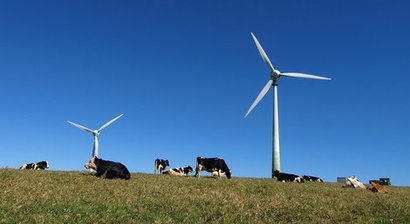
Wind power is now at 154 GW of capacity and accounts for 10.4 percent of power demand in the EU. It also supports the wider energy system and economy while cost reductions and new technology are helping to reduce consumer’s energy bills. Direct Power Purchase Agreements are allowing industrials to hedge against the volatility of energy costs and by providing grid support services, wind is contributing to the secure management of the power system.
“Wind energy has enjoyed three decades of growth and is now Europe’s second largest form of power generation” said WindEurope CEO Giles Dickson. “As capacity continues to expand, wind will play a vital role in decarbonising Europe’s economy. It is a key partner in the energy transition. For example it’s one of the main sources of clean hydrogen so will be key in driving up the supply of hydrogen for industrial applications and energy storage. Europe's gas transmission infrastructure will play an important role in transporting these increased volumes of clean hydrogen. Wind can also help reduce the costs of offshore oil and gas through shared infrastructure and in the future via ‘power to platform’ technology”.
Mr Dickson added that the contribution of wind goes beyond the power sector, playing an increasingly influential role in the push to electrify heating, cooling and transport, boosting energy efficiency and reducing costs. A decarbonised economy powered by wind and other renewables is impossible without the electrification of these sectors. The potential is enormous: just one onshore turbine is capable of powering 3,000 electric vehicles. Dickson argued that the Clean Energy Package needs to be strengthened on this front to speed up the decarbonisation of Europe’s economy.
The message to the gas infrastructure industry came as WindEurope, in partnership with Eurelectric, the European Copper Institute, Solar Power Europe, Avere and the Europe Climate Foundation launched ‘The Electrification Alliance’. The partnership highlights the idea that the decarbonisation of transport, heating and cooling and its integration into the electricity system needs to be a cornerstone of the energy transition. Powering these sectors with clean electricity is essential for sustainable economic growth.
For additional information:

